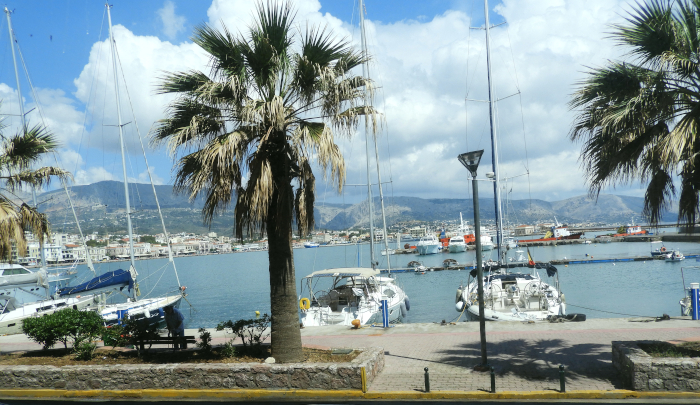In Agios Galas, in the north of the island, a middle and later Neolithic settlement (5800 - 4500 BC) was excavated. At the beginning of the 1st millennium BC the island was colonized by Iones. The ancient city of Chios, on the east coast, occupies roughly the area of the modern capital. Rich cemeteries in use since the 9th c. BC to the Roman period, workshops in the north of the city, as well as inscriptions, reliefs and architectural members from sanctuaries (Frangomachalas, Rizari). The finds are kept in the Archaeological Museum of Chios. In Emporio, a middle and later Neolithic settlement (5800 - 4500 BC) has been investigated in the south of the island. The site continued to be inhabited, with particular prosperity during the early (3rd millennium BC) and late Bronze Age (1500 - 1100 BC). The findings are exhibited in the Museum of Chios. In the SW. on the slope of the hill of Prophet Ilias, the settlement of the 8th and 7th centuries BC has been excavated. The fortified acropolis includes a sanctuary of Athena with three altars and a temple of the goddess in operation from the 6th to the 4th century. BC, as well as a 7th century BC palace. A sanctuary with an arched temple was excavated near the port (not visible today). On the rocky promontory to the S. of the port, residential remains from Mycenaean times and the Roman period were found. The Sanctuary of Fanaios Apollonos in Kato Fana, one of the important centers of worship of the Ionians, is probably identified with Delion of Chios, founded in the 8th century BC. Part of the foundation and architectural members (scattered also in the Archaeological Museum of Chios) from the monumental Ionic temple of the 6th c. BC, as well as parts of the precincts of the sanctuary of the 6th and 5th centuries BC. In Nago, the toponym is connected to the existence of visible foundations of an unidentified temple of the 4th century BC. In Aipos agricultural and livestock facilities of the 5th c. BC to Roman times testify to a relationship with mainland Greece but also the peninsula of Halicarnassus. In Daskalopetra, an open-air sanctuary of Kyveli is visible with a temple of the enthroned goddess carved into the natural rock, from the late 6th century BC. Tradition considered the monument to be the place where Homer taught. The fortified enclosure built by the Athenians in 412 BC is preserved in Delphini. and also an acropolis with a Hellenistic-era farmhouse. Public buildings are excavated at Viki in northern Chios. to Roman times testify to a relationship with mainland Greece but also the peninsula of Halicarnassus. In Daskalopetra, an open-air sanctuary of Kyveli is visible with a temple of the enthroned goddess carved into the natural rock, from the late 6th century BC. Tradition considered the monument to be the place where Homer taught. The fortified enclosure built by the Athenians in 412 BC is preserved in Delphini. and also an acropolis with a Hellenistic-era farmhouse. Public buildings are excavated at Viki in northern Chios. to Roman times testify to a relationship with mainland Greece but also the peninsula of Halicarnassus. In Daskalopetra, an open-air sanctuary of Kyveli is visible with a temple of the enthroned goddess carved into the natural rock, from the late 6th century BC. Tradition considered the monument to be the place where Homer taught. The fortified enclosure built by the Athenians in 412 BC is preserved in Delphini. and also an acropolis with a Hellenistic-era farmhouse. Public buildings are excavated at Viki in northern Chios. and also an acropolis with a Hellenistic-era farmhouse. Public buildings are excavated at Viki in northern Chios. and also an acropolis with a Hellenistic-era farmhouse. Public buildings are excavated at Viki in northern Chios.
In Chora, three-aisled basilica of Agios Isidoros (martyred in Chios in the middle of the 3rd century) with three building phases (mid-5th - mid-6th century). Fragments of a mosaic floor from the second phase, architectural members and sculptures. A mosaic floor (6th century) from Chora is on display in the Justiniani Palace. In Kato Fana, a three-aisled early Christian basilica (6th century) on the site of the temple of Apollo and remains of an early Christian settlement. In Emporio, three-aisled early Christian basilica and baptistery (6th century). Building material from a temple of the classical era has been used in the building. Fragments of frescoes in the baptistery and part of the mosaic floor are preserved.
Source: Ministry of Shipping and the Aegean
www.yen.gr
